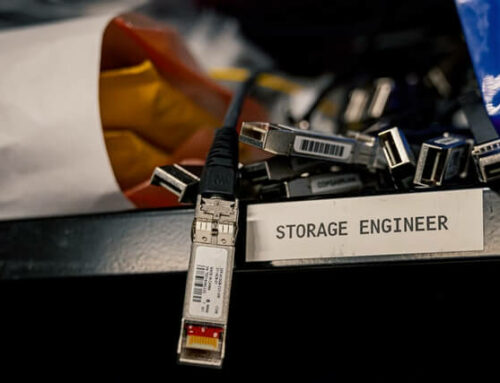The Future of Networking: Understanding Secure Access Service Edge (SASE) – Cloudflare
The cloud has completely changed how businesses operate. Workers can access data and applications from anywhere in the world, as long as they have access to an internet connection. This trend has only accelerated since the start of the pandemic. Companies are constantly innovating in order to adapt to this new cloud-based reality.
Secure access service edge (SASE) is a new offering of services in the IT world that many top organizations are beginning to adopt. Gartner estimates that “by 2024, at least 40% of enterprises will have explicit strategies to adopt SASE, up from less than 1% at year-end 2018.” Organizations of all sizes should be aware of this new trend and adopt SASE before their competitors leave them behind.
Before discussing SASE, it may be helpful to understand how organizations were dealing with cloud-based data and applications.
The Old Model
More and more organizations are taking advantage of the cloud, which means that more data, applications, services and more are used outside traditional IT pathways. In the past, traditional networks could handle an organization’s cloud-based needs. This has changed recently as more workers and applications rely on the cloud in order to perform their jobs.
IT network architectures were designed in a way that all outside use of the cloud must pass through the network perimeter and then back out. Any user that interfaces with the cloud in an outside environment will need to channel back to the corporate network utilizing outdated IT infrastructure, only to get sent back to the user in the outside world.
A simple way to understand this concept is a hub and spoke model, or a bicycle wheel. The hub is the centralized data center, which contains the data and applications, and the spokes are users on the cloud requesting applications and data from the data center. Users required the use of a localized private network or secondary network connecting to the primary network via secure leased line or VPN in order to access the hub.
This hub and spoke model sufficed in the past. As more applications, users, services, and data move to the cloud, the hub and spoke model cannot handle all of the traffic without the user experiencing some form of latency. Frustrated users may put themselves at risk by accessing the cloud via an unsecured connection. IT leaders realized that the old model of security and WAN would only limit cloud capabilities and expose them to unnecessary security threats.
In order to address these issues, organizations began to offer a collection of technologies called Secure Access Service Edge (SASE).
SASE Flips Traditional IT Architecture On Its Head
The goal of SASE is to simplify WAN and security for a workforce that is reliant on the cloud. Targeting the edge of the cloud is a more effective way for organizations to reduce latency and improve security. SASE places network controls at the edge of the connection, which allows users to access applications and data closer to eliminate any potential latency.
Instead of a data center, organizations can rely on SASE to deliver all cloud-based services and applications. SASE combines the best of network and security technologies in one single service. SASE delivers all of the networking functionality that a software-defined wide area networking platform would deliver. Organizations can expect all typical functionality, including multipath application steering and dynamic WAN link management.
Organizations will no longer need to rely on antiquated software and hardware, such as firewalls, in order to keep security protocols in place. SASE can incorporate a number of security applications, such as zero trust network access and secure web gateway, to meet the various needs of organizations. SASE combines the best of network and security functionality to meet the needs of cloud users.
This consolidation of services makes sense from a business perspective and offers companies a way to make gains on their competitors when implemented properly. Organizations should expect less complexity and less costs, as SASE will typically come from a single vendor for all WAN and security functionality. Users will have an easier time accessing the cloud, while being more secure.
Secure access service edge can improve an organization’s ability to securely deliver cloud applications and services to customers and employees. Businesses should seriously consider adopting an SASE solution that can improve the way their business functions. SASE solutions can be customized to meet the needs of any business.












